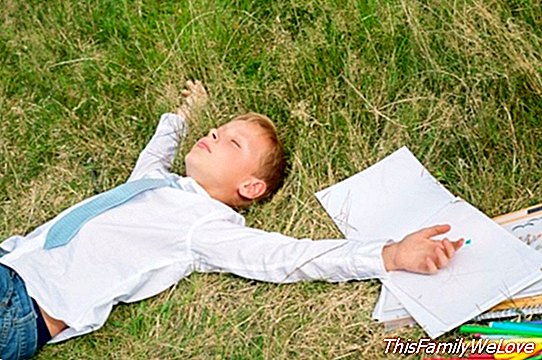Children fainting, how to act in the face of syncopes

Like adults, children may also feel weak on occasion, momentarily losing consciousness, but these childhood fainting or fading should not worry parents too much, because the causes are usually not serious.
These fainting, are known in medical terms as syncopes, they are rare in children under 10 years old and more common among teenagers, mainly in girls. In general, fainting occurs in specific and temporary situations.
Childhood faints or fainting are produced by an alteration of the nervous or circulatory system, with a temporary decrease in blood flow to the brain and, therefore, lack of oxygen. The heart contracts more strongly than usual due to emotions of stress, heat or exercise, for example, which causes the nervous system to overreact. Then, the main blood vessels, including those that irrigate the brain, narrow and reduce the passage of blood.
What causes child fainting or syncopation?
- Emotion, excessive effort, hunger or heat of a poorly ventilated stay are usually the main causes of the loss of knowledge in children and young people.
- Stress and anguish, For example, hearing a shocking news or seeing a scary scene from a movie can also trigger a faint in children and adolescents.
- A coughing attack or getting up quickly after sitting for a long time they are among the main reasons for a fading.
Symptoms of children fainting or syncopes of children
Faced with this type of situation, the body reacts to try to defend itself at first: it increases the respiratory rate and the heartbeat to elevate blood flow and oxygen, before arriving, ultimately, at syncope as a definitive solution to recover the blood flow.
Hence, the first symptoms prior to the loss of consciousness are:
- dizziness
- palpitations
- paleness
- weakness
- sweating
- blurry vision
- loss of strength
How to act in the face of childhood faints
- Rest position. At the first sign of weakness of the child, you have to lie on your back, with your feet raised above your chest. If it is not possible because of the place where you are, another option is to sit with your head between your knees.
- Comfort. To facilitate a good oxygenation, you have to loosen the clothes that are tight and check that you breathe freely.
- Remove obstacles. If you have food in your mouth, you have to lie on your side with your face to the ground so that it does not choke and expel whatever it may contain in your mouth at that time.
- Let him come to himself. Do not try to awaken him, but it is convenient to recover consciousness by himself. Generally, the child regains consciousness within a short time.
- Go to the doctor. It is advisable to inform the pediatrician of what happened, especially if the causes are unknown or the child suffers more from fainting. In addition, it is possible that there are other triggers that are negative, such as anemia, dehydration, low blood sugar in diabetic children or even a heart disorder.
Prevention and treatment of childhood faints
1. Teach simple resuscitation techniques. In the case of children or adolescents who suffer from syncopes frequently or on more than one occasion, their parents must learn to recognize the first signs of fainting and pass it on to the children since the final outcome can be avoided with simple techniques such as placing the head of the child. lower between the knees or lay him down.
2. Run away from the heat. A good recommendation is to reduce the time of exposure to the heat of the midday sun, baths and very hot showers, and avoid saunas and whirlpools altogether.
3. Avoid being a long time standing or sitting. Parents should teach children that they will stand for a long time to move the weight from one leg to another and flex the muscles of the legs to maintain active circulation. On the contrary, in the case of children who spend a lot of time sitting, it is very useful to lean forward with your hands on your knees or bring your knees to your chest.
4. Eat well and in a healthy way. Many times, fainting in adolescents is related to poor diet, so a good treatment is to ensure that they are on a proper diet, with the right amount of salt and water. Although a diet with excess sodium can cause hypertension, the lack of this mineral is not healthy either. The recommended dose is 8 glasses of water and other liquids a day.
Dr. Paloma Nacher. Neonatologist and Head of the Pediatric Emergency Service of La Milagrosa Hospital
You may also like:
- Shade against dizziness of children in the car
- The brain and the body development of children




